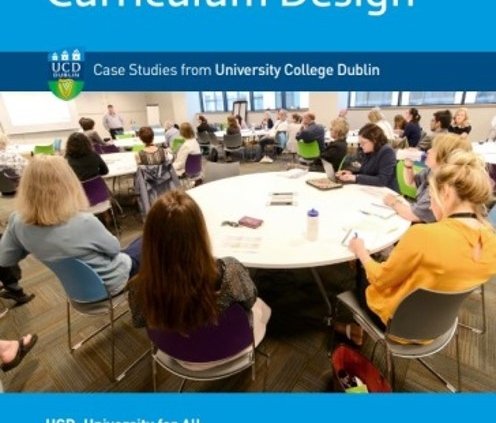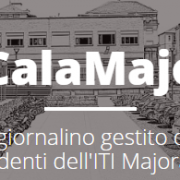University for All
Excerpt
The University for All project offers an example of utilizing all opportunities to ensure that diversity and equity are incorporated in a whole-institutional approach. All aspects of university life have been examined. Colleagues collaborated to develop towards the15 key goals, activities and initiatives. These are monitored through an institutional committee and report process.
Narrative, origins and objectives of the initiative
What kind of project is this? Please give a short description (summary) of it.
This project sets out 15 key goals, activities and initiatives that are prioritized for implementation over the period 2017-2020. The ambition is ‘(…) to support the University to become “a pre-eminent diverse and inclusive scholarly community of students, faculty and staff” (UCD, 2015). In addition to this objective, it is intended that, by 2020, 33% of undergraduates will be drawn from communities experiencing low progression rates to higher education.’ (UCD, University for All Workplan 2017-2020.)
Please tell us why, in general, this project is considered a successful one?
The project is a top-down, as well as a bottom-up initiative. It offers an example of utilizing all opportunities to ensure that diversity and equity are incorporated in a whole-institutional approach. All aspects of university life have been examined. Colleagues collaborated to develop towards the goals. These goals are very clear, measurable and monitored through an institutional committee and report process.
And why would you consider it a grass-roots initiative?
University for All has its genesis in decisions taken over the past decade. A renewal process was undertaken to give fresh impetus to access and inclusion. Uniquely among Irish universities, UCD opted to integrate the continuum of access-related strands, resulting in the establishment of UCD Access & Lifelong Learning (ALL) in 2009. This brought together the previously stand-alone strands of access and adult education-related activity, including supports for students from low income households, those with disabilities, older students, as well as those studying part-time. UCD’s Strategic Plan at that time committed to broaden the range of opportunities for students with diverse backgrounds, to build flexible modes of course delivery, and consolidate and develop existing access programmes and initiatives.
In 2012, UCD Access & Lifelong Learning was the subject of a quality review, which highlighted the need to embed the access agenda, and reposition the ALL units as supportive of, rather than constituting the sole or main component of, UCD’s widening participation work. Over the next several years, the purpose, role and structure of ALL was re-imagined. Today, it is a centrally positioned hub that profiles inclusion, offering support both for under-represented students, and to the University community to enable access to be mainstreamed and embedded.
Another important step in this journey focused on part-time education. Access to part-time education has been traditionally associated with UCD Adult Education. Over the past four years, this provision has been mainstreamed through Open Learning. This innovative approach has resulted in opening undergraduate modules to those who wish to study on a part-time basis. Now offered by 35 Academic Schools, three progression pathways to undergraduate degree programmes have been developed thus far.
A key staging post in this change journey was the decision to establish the UCD Widening Participation Committee in 2012, as the formal mechanism to oversee the University’s progress towards the achievement of access, participation and success for under-represented students. Professor Brian Nolan was appointed Chair and Professor Colin Scott took over this responsibility in 2014. The appointment of highly regarded and respected members of faculty is an important lever for change, and sends a message to the University community that this work is valued. The Committee was established for a three-year period and membership comprised representatives of the UCD College Principals, as well as relevant Support Services. A “town hall” meeting was held on the 22nd of May 2013 to consult faculty and staff on access-related issues, and the Chair met with academic Programme Boards in early 2015. In addition, the Committee produced a series of reports, including:
- Institutional Barriers to Full Participation by Students Constrained by Personal or Professional Circumstances, or Economic or Social Disadvantage, (September 2013).
- Key Performance Indicators: Recommendations: Definitions and Data Collection (December 2013).
- Under-represented Students: Targets and Initiatives (April 2015).
UCD positioned its commitment of diversity and inclusion front and centre its new Strategic Plan 2015-2020. The vision commits the University to becoming “a pre-eminent diverse and inclusive scholarly community of students, faculty and staff” (p. 9), while Objective 5 commits to “attract and retain an excellent and diverse cohort of students, faculty and staff” (p. 10). Such statements offer a platform to implement and mainstream access: as such they are important change levers. Alongside this strategy, the University developed key performance indicators (KPIs), committing to 33% of undergraduates being drawn from target equity groups by 2020. UCD recorded 29% for the 2016-2017 academic year, having demonstrated an incremental increase annually.
Following a review at the end of the three-year period, the UCD Widening Participation was re-established in 2016 with new Terms of Reference. Professor Grace Mulcahy was appointed Chair, and this re-established Committee reports to the University Management Team, Equality, Diversity and Inclusion sub-group. The Committee is now aligned with academic structures, which constitutes a critical structural change to ensure that access is embedded in the academic fabric on the institution. Membership is drawn from all Academic Programme Boards, Policy and Support Services, and Student Access Leaders. UCD Access & Lifelong Learning plays a key role in providing the Committee with policy advice, expertise and operational support.
Building on the platform of work already done, the Widening Participation Committee reviewed progress towards the achievement of recommendations of the Institutional Barriers report. Each Programme Board was also invited to provide a report on progress towards meeting targets for under-represented student groups, and actions taken to promote inclusion, participation and student engagement.
University leadership is also crucial to ensure the implementation of sustained and practical actions. A meeting of the UCD Governing Authority on May 16th, 2017 was an important juncture. A comprehensive briefing was provided on the systemic approach to building a mainstream inclusive university community. The Governing Authority commended and endorsed the approach taken.
The visibility of University leaders are essential. And so are their efforts to promote continuous movement to ensure that change actions are implemented and sustained. For example, sponsorship of University for All is undertaken by the UCD Registrar and Deputy President. A senior member of faculty leads the UCD Widening Participation Committee. The public recognition and endorsement of access and inclusion is evident in the UCD President’s weekly bulletin (President’s Bulletin #175 - 21 November 2017, from Professor Andrew Deeks).
In order to capitalise on the progress made and to inject further momentum, the commitment to mainstreaming access and inclusion was formalised as University for All and launched by the Minister for Higher Education, Deputy Mary Mitchell O’ Connor, T.D. on November 30th, 2017.
What challenges needed to be solved in this project?
In the first sub-question, 15 key goals were mentioned. These goals are (mostly cited from Work plan 2017-2020):
- To develop an institution-wide, universally designed and inclusive approach to access and participation;
- To ensure accessibility of the built and technological environment;
- To implement a coherent suite of pre-entry outreach initiatives to increase access and widen participation by underrepresented student cohorts;
- To support and expand the range and size of scholarships and financial supports to meet the needs of underrepresented student cohorts;
- To promote, embed, and adjust/increase the range of entry routes to facilitate study requirements;
- To ensure that all students are ready to engage successfully with all aspects of university life;
- To foster an access alumni network to help graduates keep in touch with the Access & Lifelong Learning Centre;
- To develop a model of best practice for post-entry access supports;
- To support the University community to offer a suite of part-time study options;
- To develop research and data evidence to underpin policy, service development and provision;
- To develop operations, processes and infrastructure, to enable effective, value-added service delivery that is aligned with the University’s strategic objectives, and offers an open, welcoming and effective environment for all;
- To ensure that the required human, financial, training and development resources are allocated;
- To promote a culture of creativity and innovation;
- To develop strategies to increase awareness of the University’s achievements in widening participation through publications, events and promotions;
- To represent the University nationally and internationally in advocating and showcasing, widening participation in higher education.
Is this initiative based on any particular theoretical framework? Which one?
The project was influenced by work on designing inclusive learning environments, such as:
- ‘universal design’ (Mace, 1998; Rose & Meyer, 2002)
- ‘inclusive design’ (Goodman, 2016; Politis et al., 2014)
- ‘design for all’ (Bendixen & Benktzon, 2015).
(extended literature list available)
Statement: inclusive institutes of Higher Education “(…) design programmes, teaching, supports and a campus environment which can be accessed, understood and used to the greatest extent possible by all students. […They…] strive to remove barriers, allowing equal opportunity to access, progress and succeed in higher education regardless of background, personal circumstances, age, disability, or pace of study.”
(Appendix) Is your intervention standing on its own or is it a part of a bigger and more holistic approach?
It is part of a bigger approach (as explained above): national politics, university policy and this initiative are in line.
Please describe the group(s) intended as beneficiaries of this initiative
Why has this group (have these groups) been chosen?
Several underrepresented target groups (called "equity groups") were chosen for the fact that they seem to be underprivileged, like:
- Students with a disability;
- Students from a background of socio-economic disadvantage;
- Older students;
- Irish Travelers (Wikipedia: a traditionally itinerant ethnic group who maintain a set of traditions);
- Part-time students;
- Additional identified groups (like single parents, refugees, asylum seekers, those who have permission to remain ethnic minorities).
Could you please tell us something about the relative size of the (of each) target group, within the school/university population, region and/or country?
Together, the ambition with regard to equity groups is that they encompass about 33% of the university population in 2020 (ppt, slide 20). University for All - Mainstreaming Inclusive Practice EAN 6 June 2018. Overall our goal is to ensure that the campus is as diverse as the Irish population. Our initial goal of 33% is laid out in the National Access Plan. This is currently being reviewed and will increase in the next National Access Plan.
Which social characteristics are taken into account and what is the geographical area covered?
Due to the varied composition of the equity groups, a wide variety of characteristics is (potentially) addressed; the whole learning environment is, in all its facets, truly designed to be fit for all students. While UCD is, of course, an Irish (and Dublin) university, it aspires to operate globally (the University for All is part of this ambition).
On which level is the project implemented?
The project is implemented on university level, encompassing all activities related to education and campus life.
Please describe the political and socio-economic factors that you believe have been important enablers for your initiative
Did the initiative have political support?
Yes, there are international (UNESCO, EU, Bologna) national (National Access Policy) as well as institutional policy drivers (see ppt slide 10+11) University for All - Mainstreaming Inclusive Practice EAN 6 June 2018. The target groups are identical to the national target groups as mentioned in the National Plan (see next sub).
How did it fit with local, regional or national policies?
Quote National Access Policy (slide 11) University for All - Mainstreaming Inclusive Practice EAN 6 June 2018: “Integrate the principle of equity of access more fully into the everyday life of the HEIs so that it permeates all faculties and departments, and is not marginalised as the responsibility of the designated access office” (HEA [=Higher Education Authority], 2015c, p. 25).
This extent of integration is exactly what the university aims at. The university gives an interpretation to the Irish national plan (National Plan for Equity of Access to Higher Education 2015-2019): https://www.education.ie/en/Publications/Policy-Reports/National-Plan-for-Equity-of-Access-to-Higher-Education-2015-2019.pdf
Who are the stakeholders supporting the initiative?
The most senior stakeholder providing support for this initiative is the University Registrar and Deputy President, Prof. Mark Rogers. The initiative has also been supported by academic and professional colleagues who are part of the University’s Widening Participation Committee.
Are there particular demographic changes present that are influencing the project?
Yes, the project seems to be successful at increasing the rates of the aforementioned underprivileged groups; statistics about this are available (summarized on sheets 53-54-55) University for All - Mainstreaming Inclusive Practice EAN 6 June 2018
What is the institutional strategy and culture of the (educational) organization?
The strategy of UCD is to follow the aforementioned National Plan, translating it into measurable objectives in relation to all educational processes. Progression is monitored. In general, UCD aims to make their education and the whole study environment as safe, clear, welcoming and accessible as possible to all students.
To what extent does the initiative have an influence on institutional policy (or potential influence) of the (educational) organization?
The initiative has significant influence on the institutional policy on widening participation and access. The initiative has increased institutional awareness of issues of accessibility and inclusion and has the potential to influence all future policies within the university.
(Appendix) Is there public support for your initiative and the issue it addresses?
Our national access plan specifically states that the next step is to ensure that we mainstream the objective of inclusion and diversity. This was the key for our project.
(Appendix) What other factors do you think have been important for the success of this initiative?
Support from our registrar has facilitated the development on a number of levels.
Please describe the overall initiative design and the methods and tools used to reach the goals
Please describe the specific activities carried out.
University for All is a holistic or whole-institution approach to mainstreaming access and inclusion. University for All encompasses the key pillars of campus life, i.e. :
- Programme design, teaching & learning
- Student supports and services
- Physical campus environment
- Information technology systems and infrastructure
These four pillars are underpinned by the institution’s strategic approach and organization. The scaffolding is provided by UCD Access & Lifelong Learning, and the UCD Widening Participation Committee, respectively. The implementation process reveals the elements of scaffolding required, including knowledge, awareness, supports, practical assistance, and training.
Progress is evident across the four pillars. In Pillar 1, programme design, teaching & learning, training and materials in universal design were provided for teams involved in the curriculum review process. Case studies have been published demonstrating how to design programmes. Guidance was provided to ensure accessibility in the Virtual Learning Environment, including the creation of accessible materials, and setting up accessible online tests. UCD ALL worked with AHEAD to develop a digital badge in Universal Design in Teaching and Learning. This digital badge forms part of the National Forum for the Enhancement of Teaching & Learning in Higher Education’s professional development framework. This digital badge can now be facilitated in any higher education institution and will be rolled out further in UCD in 2018. The UCD Professional Certificate and Diploma in University Teaching, which is offered to all faculty, includes guidance on inclusive assessment, accessible curriculum design and universal design in teaching technologies. The principles of universal design have been used to design a new Social Science Programme module. Similar work is underway in a Business programme module.
In the student supports and services pillar, guidelines to produce accessible documents, website material, videos and other visual materials have been developed. Training has also been offered to all student-facing staff and faculty. A wide range of student supports is offered by the University, including Student Advisers, Counselling & Health, Chaplaincy, Library, UCD Sport, Student Desk, and Students’ Union. These services are now offered to all, including under-represented cohorts. UCD Access & Lifelong Learning offers supplemental supports, as necessary. Streamlining has taken place resulting in no duplication of effort or resources.
Work on the built environment is also in progress. For example, the Campus Accessibility Officer, working with UCD Estates, undertook a campus accessibility audit, which prioritized remediation works necessary, together with the allocation of a dedicated annual budget. The development of accessible signage is also underway, including information and orientation signage at main entrances, accessible ways to reach principal destinations, and identification signage at principal destination, along with building identification. A collaborative project between students and staff led to the publication of the Getting Around UCD Videomap Series. Student accommodation developed a system to prioritise and reserve accessible accommodation for students with disabilities, and some of the lowest cost rooms are reserved for those from low income households.
The fourth pillar, information technology systems and infrastructure, has seen a move away from the use of note-takers, scribes and other “person supports” for students with a disability, to technology solutions, including Grammarly, Live Scribe pens, Cogi and Dragon Naturally Speaking. The advantage of adopting this approach is that students can use these tools independently and carry them forward to the workplace. A robust system to track under-represented students has been developed. Institution and programme level data are now available. Information on disability supports is available to designated faculty via Class Lists. Applications for financial supports and scholarships have all been embedded on the UCD systems allowing for ease of application and payment.
What were the key roles (teacher, student, management team etc.) within the project?
An initiative of the scale and complexity of University for All can be daunting and requires courage, perseverance and, most importantly, the support of key senior colleagues. The implementation is not a linear process: academic institutions are culturally and structurally complex entities.
When undertaking such an initiative, it is important to begin wherever possible: in other words, to take advantage of opportunities presented, such as developing new organisational strategies, a quality review process, restructuring, etc. For example, the development of an institutional strategy offers an opportunity to embed key components such as the vision for access and inclusion.
The support of key senior academic leaders is essential to the successful implementation of a whole-institution approach. Kotter characterised leadership as setting a direction, aligning and motivating people to achieve success, and overcoming obstacles. Support in navigating institutional complexities, building alliances, and mobilizing support is indispensable.
The ability to adapt as the project develops is required. Opportunities, like a change in direction, priority or personnel, may be harnessed and often serve to overcome obstacles. Celebrate small pockets of good practice as they emerge: success breeds success and serves to both encourage and to reassure. Change happens slowly and incrementally in many institutions. Perseverance, resilience and flexibility are necessary qualities. The language of encouragement, acknowledgement and collaboration is powerful: that of enforcement is most unlikely to yield sustainable results.
Developing an understanding of mainstreaming and inclusion needs to be rehearsed frequently. Accelerating the implementation process can be challenging and a broad view of the work is necessary to identify opportunities of scalability and synergies. Moving access from the margins to the mainstream is but one issue, one challenge, one priority, in the higher education landscape. Key institutional priorities typically revolve around research, teaching, and engagement; finding opportunities to align with these, leads to a whole-institution approach being considered less burdensome and hence more achievable.
An oversight committee helps to create institutional ownership. Such a group, drawn from respected members of faculty and professional staff, brings expertise, energy, and perspective, and acts as the ‘guiding coalition’ that steers the initiative and overcomes barriers to progress.
Navigating the space between academic autonomy and inclusive practice can also present challenges. Faculty has a high level of autonomy, which enables them to focus on their chosen field of research. Approaching the issue of creating an inclusive institution is more effective when it incorporates a top-down as well as bottom-up approach. A top-down approach sends a clear message that inclusion is an institutional priority, and embedding it in the vision, goals and policy works to set expectations. A bottom-up approach facilitates discussion, debate and allows time to consider issues of inclusion.
Identifying early adopters and publishing these case studies also provides practical advice and offers exemplars of good practice. An inclusion initiative also needs to be situated in the context of equality legislation, which requires parity of treatment for all. Some faculty members may be concerned that increased engagement time with students and scaffolding skill development may leave less time for delivery of content. Emphasizing the link between programme delivery and content with graduate attributes can be a useful way to demonstrate the importance of embedding increased engagement, opportunities for expression and interaction in teaching and learning activities. At programmatic review, the key content should be identified with sufficient time allowed for successful delivery, which includes multiple means of action, expression and engagement for students. Emphasizing that universal design for learning has been developed based on extensive and ongoing research, can also be useful. The support and expertise of Teaching & Learning colleagues is crucial in helping to address such issues.
In an environment of competing priorities, there is merit in recognising those engaged in inclusive practice, which is sometimes considered as “supplementary” work. There are several ways to reward and encourage good practice. A most effective is through promotion pathways. Ideally, inclusive practice should be embedded in existing pathways, rather than side-lined into a separate pathway. This reflects the goals of mainstreaming inclusion, where all seek to improve the accessibility and inclusivity of their teaching. Other rewards include a monetary or other award, achieved through application or nomination. For example, the University of Newcastle has a series of awards that recognise outstanding equality, diversity and inclusion work, with separate categories for initiatives, staff and students.
In many institutions, the designated access service holds the sole responsibility for outreach to, and support of targeted under-represented student groups. In the context of the development of a whole-institutional approach, and increasing student numbers, this role may need to be redefined. Access practitioners are well-placed to support students and provide the expertise to enable mainstreaming and embedding inclusive practice.
What ideas, tools, theories, models, methodology (etc.) have been used to reach the goals?
Our project has been based on inclusive and universal design, as well as frameworks for institutional change (as already explained).
What are the final revenues of the project?
N.a.
Please describe if your project ensured its sustainability
If so, how did you ensure the short-term impact of the project?
Through the establishment of the Widening Participation Committee, which has members from across the university – ownership of this work is then taken on by the institution.
And how did you ensure the long-term impact of the project?
We will continue to periodically return to work with programme boards and other key committees to measure progress and renew commitment.
Has your project been replicated elsewhere?
We are working with a HEI – IADT that hope to adapt this model in their own institution.
Please tell us about the resources used in this initiative
What was the budget for the initiative?
No additional budget for this initiative was provided – we worked within the existing budget for Access and Lifelong Learning.
How much did the initiative depend on volunteers?
N.a.
How were the costs perceived by the public/the sector/other stakeholders?
We used our existing budget to run this project.
To what extent did the initiative achieve its objectives?
Please describe the evidence to support the success of your initiative.
This project was launched less than one year ago so we have not yet completed a measurement of its success. We will review the project objectives periodically and complete the evaluation/measurement outlined below.
Did the intervention lead to any unintended (positive) outcomes?
In visiting all of the programme boards in the university we achieved much more visibility and awareness of the work of widening participation and access in the university overall. We were also able to open the dialogue with a number of colleagues with whom we may not otherwise have come into contact with.
What indicators (quantitative and qualitative) have you measured to demonstrate success?
We will revisit the barriers reports produced in earlier years by the Widening Participation Committee of the university – we will establish which barriers the project has been able to successfully remove and re-establish the goals of the project through a renewed examination of other potential barriers to inclusion within the university.
The quantitative indicators we plan to measure include data on our designated widening participation student groups looking at the programme level to ascertain 1. Access 2. Progress 3. Success/Completion. We have baseline information on this data so we will continue to monitor this. We will also measure qualitatively the student experience within the university.
(Appendix) How did you evaluate/monitor this intervention?
Through monitoring of the student population and student satisfaction/feedback. Although through repeating a report on the barriers within the institution to access, participation and success for all students.








 Copyright by Mili Flener
Copyright by Mili Flener